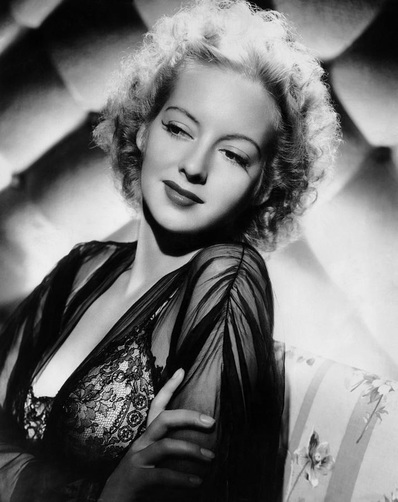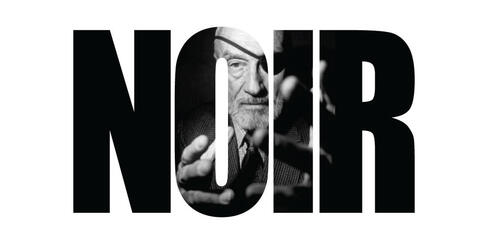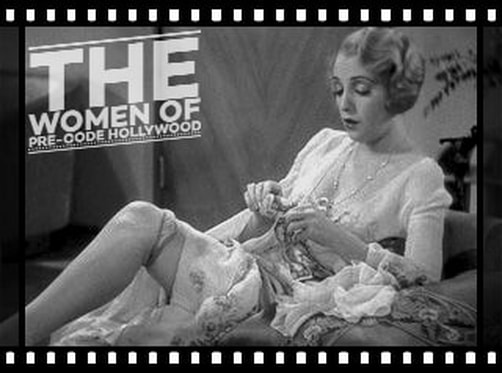EVELYN KEYES
AND FILM NOIR
Evelyn Keyes made notable contributions to the film noir genre during her career in the 1940s and 1950s. While she is perhaps best known for her roles in other genres, she appeared in several notable film noir films, showcasing her versatility as an actress.
One of Keyes' significant film noir appearances was in "The Prowler" (1951), directed by Joseph Losey. In the film, Keyes played Susan Gilvray, a lonely housewife who becomes the target of a corrupt police officer. Her character's vulnerability and desperation were skillfully portrayed by Keyes, as she captured the sense of fear and manipulation central to many film noir narratives.
Another notable film noir in Keyes' career was "99 River Street" (1953), directed by Phil Karlson. Keyes played Linda James, the wife of a former boxer who becomes embroiled in a dangerous plot. Her performance in the film showcased her ability to convey complex emotions and the character's strength and resilience in the face of adversity.
Keyes also appeared in "The Killer That Stalked New York" (1950), directed by Earl McEvoy. In this film, she portrayed Sheila Bennet, a woman who unwittingly spreads a deadly disease in New York City. Keyes' performance added depth and nuance to her character, contributing to the tension and suspense of the film. While Keyes may not have been as closely associated with the film noir genre as some of her contemporaries, her appearances in these films demonstrated her adaptability as an actress. She effectively captured the essence of the genre through her portrayals of complex and conflicted characters, contributing to the atmospheric and suspenseful nature of film noir.
Overall, Evelyn Keyes' contributions to film noir may not have been as extensive as her work in other genres, but her performances in films like "The Prowler," "99 River Street," and "The Killer That Stalked New York" showcased her talent and versatility within the genre.
One of Keyes' significant film noir appearances was in "The Prowler" (1951), directed by Joseph Losey. In the film, Keyes played Susan Gilvray, a lonely housewife who becomes the target of a corrupt police officer. Her character's vulnerability and desperation were skillfully portrayed by Keyes, as she captured the sense of fear and manipulation central to many film noir narratives.
Another notable film noir in Keyes' career was "99 River Street" (1953), directed by Phil Karlson. Keyes played Linda James, the wife of a former boxer who becomes embroiled in a dangerous plot. Her performance in the film showcased her ability to convey complex emotions and the character's strength and resilience in the face of adversity.
Keyes also appeared in "The Killer That Stalked New York" (1950), directed by Earl McEvoy. In this film, she portrayed Sheila Bennet, a woman who unwittingly spreads a deadly disease in New York City. Keyes' performance added depth and nuance to her character, contributing to the tension and suspense of the film. While Keyes may not have been as closely associated with the film noir genre as some of her contemporaries, her appearances in these films demonstrated her adaptability as an actress. She effectively captured the essence of the genre through her portrayals of complex and conflicted characters, contributing to the atmospheric and suspenseful nature of film noir.
Overall, Evelyn Keyes' contributions to film noir may not have been as extensive as her work in other genres, but her performances in films like "The Prowler," "99 River Street," and "The Killer That Stalked New York" showcased her talent and versatility within the genre.
AVAILABLE FILMS:
99 RIVER STREET (1953)
DANGEROUS BLONDES (1943)
DANGEROUS TO KNOW (1938)
DESPERADOES, THE (1943)
FACE BEHIND THE MASK, THE (1941)
JOHNNY O'CLOCK (1947)
KILLER THAT STALKED NEW YORK, THE (1950)
LADIES IN RETIREMENT (1941)
LADY IN QUESTION, THE (1940)
MR. SOFT TOUCH (1949)
PROWLER, THE (1951)
SMUGGLER'S ISLAND (1951)
TOP OF THE WORLD (1955)
UNION PACIFIC (1939)
DANGEROUS BLONDES (1943)
DANGEROUS TO KNOW (1938)
DESPERADOES, THE (1943)
FACE BEHIND THE MASK, THE (1941)
JOHNNY O'CLOCK (1947)
KILLER THAT STALKED NEW YORK, THE (1950)
LADIES IN RETIREMENT (1941)
LADY IN QUESTION, THE (1940)
MR. SOFT TOUCH (1949)
PROWLER, THE (1951)
SMUGGLER'S ISLAND (1951)
TOP OF THE WORLD (1955)
UNION PACIFIC (1939)
VIDEO TRIBUTE:
Evelyn Keyes

Evelyn Keyes was an American actress born on November 20, 1916, in Port Arthur, Texas. She achieved recognition for her versatile talent and appeared in numerous films throughout the 1940s and 1950s. Keyes is best known for her roles in the classic films "Gone with the Wind" and "The Jolson Story."
Keyes began her career in the entertainment industry as a dancer in various Broadway productions. She caught the attention of David O. Selznick, who cast her as Suellen O'Hara, the younger sister of Scarlett O'Hara, in the epic film "Gone with the Wind" (1939). While the role was relatively small, it became one of Keyes' most significant contributions to cinema, and the film itself remains one of the most celebrated movies in history.
Following her success in "Gone with the Wind," Keyes continued to act in a wide range of films. She appeared in movies such as "Here Comes Mr. Jordan" (1941), "The Face Behind the Mask" (1941), and "Dangerously They Live" (1941), showcasing her versatility and talent as an actress.
In 1946, Keyes portrayed Julie Benson in "The Jolson Story," a biographical musical about the life of singer Al Jolson. Her performance earned critical acclaim, and the film became a major success. Keyes demonstrated her singing ability and captivated audiences with her portrayal of Jolson's love interest.
Throughout the 1950s, Keyes continued to work in film, starring in productions such as "Mrs. Mike" (1949), "The Killer That Stalked New York" (1950), and "The Prowler" (1951). She demonstrated her versatility by appearing in various genres, including drama, thriller, and film noir.
In addition to her film career, Keyes also made notable appearances on television. She guest-starred in popular shows such as "Perry Mason," "77 Sunset Strip," and "Rawhide."
Beyond her acting pursuits, Keyes led an eventful personal life. She was married and divorced three times, with her most well-known marriage being to director Charles Vidor. Keyes also wrote an autobiography titled "Scarlett O'Hara's Younger Sister: My Lively Life in and Out of Hollywood," published in 1977, in which she shared anecdotes and insights about her career and relationships.
Evelyn Keyes made valuable contributions to the world of film, leaving a lasting impact with her roles in iconic movies like "Gone with the Wind" and "The Jolson Story." Her talent, versatility, and memorable performances solidified her place in Hollywood history. Evelyn Keyes passed away on July 4, 2008, at the age of 91, leaving behind a legacy of remarkable work in film and television.
Keyes began her career in the entertainment industry as a dancer in various Broadway productions. She caught the attention of David O. Selznick, who cast her as Suellen O'Hara, the younger sister of Scarlett O'Hara, in the epic film "Gone with the Wind" (1939). While the role was relatively small, it became one of Keyes' most significant contributions to cinema, and the film itself remains one of the most celebrated movies in history.
Following her success in "Gone with the Wind," Keyes continued to act in a wide range of films. She appeared in movies such as "Here Comes Mr. Jordan" (1941), "The Face Behind the Mask" (1941), and "Dangerously They Live" (1941), showcasing her versatility and talent as an actress.
In 1946, Keyes portrayed Julie Benson in "The Jolson Story," a biographical musical about the life of singer Al Jolson. Her performance earned critical acclaim, and the film became a major success. Keyes demonstrated her singing ability and captivated audiences with her portrayal of Jolson's love interest.
Throughout the 1950s, Keyes continued to work in film, starring in productions such as "Mrs. Mike" (1949), "The Killer That Stalked New York" (1950), and "The Prowler" (1951). She demonstrated her versatility by appearing in various genres, including drama, thriller, and film noir.
In addition to her film career, Keyes also made notable appearances on television. She guest-starred in popular shows such as "Perry Mason," "77 Sunset Strip," and "Rawhide."
Beyond her acting pursuits, Keyes led an eventful personal life. She was married and divorced three times, with her most well-known marriage being to director Charles Vidor. Keyes also wrote an autobiography titled "Scarlett O'Hara's Younger Sister: My Lively Life in and Out of Hollywood," published in 1977, in which she shared anecdotes and insights about her career and relationships.
Evelyn Keyes made valuable contributions to the world of film, leaving a lasting impact with her roles in iconic movies like "Gone with the Wind" and "The Jolson Story." Her talent, versatility, and memorable performances solidified her place in Hollywood history. Evelyn Keyes passed away on July 4, 2008, at the age of 91, leaving behind a legacy of remarkable work in film and television.
quotes:
"The big studios were each headed by a Big Daddy who reigned supreme."
"I have often wondered what my life would have been like if I had needed a size 38 bra instead of a modest 34."
"I always took up with the man of the moment . . . and there were many such moments."
[About her role in Gone with the Wind (1939)] "I got to star in my own movies. I even had my name above the title in some cases. But what am I known for? My bit part. It's very funny."
- Evelyn Keyes
Trivia:
She was best-known for playing Scarlett O'Hara's younger sister in Gone with the Wind (1939) and, in fact, titled her 1957 autobiography "Scarlett O'Hara's Younger Sister".
Her marriage in 1946 to John Huston was eccentric, to say the least. Just one of the examples she recalled involved Huston returning home from the film We Were Strangers (1949) with a gift from Jennifer Jones--a pet chimpanzee.
Among the many Hollywood affairs she recounts in her 1977 memoir "Scarlett O'Hara's Younger Sister" were those with producer Mike Todd (who left Evelyn for Elizabeth Taylor), Anthony Quinn, David Niven and Kirk Douglas.
In 1951 RKO Pictures wanted to produce a film noir entitled "The Sins of Sarah Ferry". The story was about a courthouse clerk in Binghamton, New York, who finds herself falling in love with a beautiful liar who is accused of armed robbery as well as a hit-and-run charge involving a death. It would have starred Laraine Day, Fred MacMurray, Yvonne De Carlo, Hugh Beaumont, Glenn Ford, Howard Duff and Evelyn, with shooting scheduled for location in Binghamton and neighboring Johnson City. This project never materialized because the plot was considered too close that of Double Indemnity (1944), and the studio never received a reply via phone call or mail from the Binghamton Courthouse or then Mayor Donald Kramer granting them permission to film on location in the area and negotiate a fair payment. Based on those circumstances, the studio immediately canceled this project and moved on.
Appeared in two Oscar Best Picture winners: Gone with the Wind (1939) and Around the World in 80 Days (1956), and one other Best Picture nominee: Here Comes Mr. Jordan (1941).
Her marriage in 1946 to John Huston was eccentric, to say the least. Just one of the examples she recalled involved Huston returning home from the film We Were Strangers (1949) with a gift from Jennifer Jones--a pet chimpanzee.
Among the many Hollywood affairs she recounts in her 1977 memoir "Scarlett O'Hara's Younger Sister" were those with producer Mike Todd (who left Evelyn for Elizabeth Taylor), Anthony Quinn, David Niven and Kirk Douglas.
In 1951 RKO Pictures wanted to produce a film noir entitled "The Sins of Sarah Ferry". The story was about a courthouse clerk in Binghamton, New York, who finds herself falling in love with a beautiful liar who is accused of armed robbery as well as a hit-and-run charge involving a death. It would have starred Laraine Day, Fred MacMurray, Yvonne De Carlo, Hugh Beaumont, Glenn Ford, Howard Duff and Evelyn, with shooting scheduled for location in Binghamton and neighboring Johnson City. This project never materialized because the plot was considered too close that of Double Indemnity (1944), and the studio never received a reply via phone call or mail from the Binghamton Courthouse or then Mayor Donald Kramer granting them permission to film on location in the area and negotiate a fair payment. Based on those circumstances, the studio immediately canceled this project and moved on.
Appeared in two Oscar Best Picture winners: Gone with the Wind (1939) and Around the World in 80 Days (1956), and one other Best Picture nominee: Here Comes Mr. Jordan (1941).




